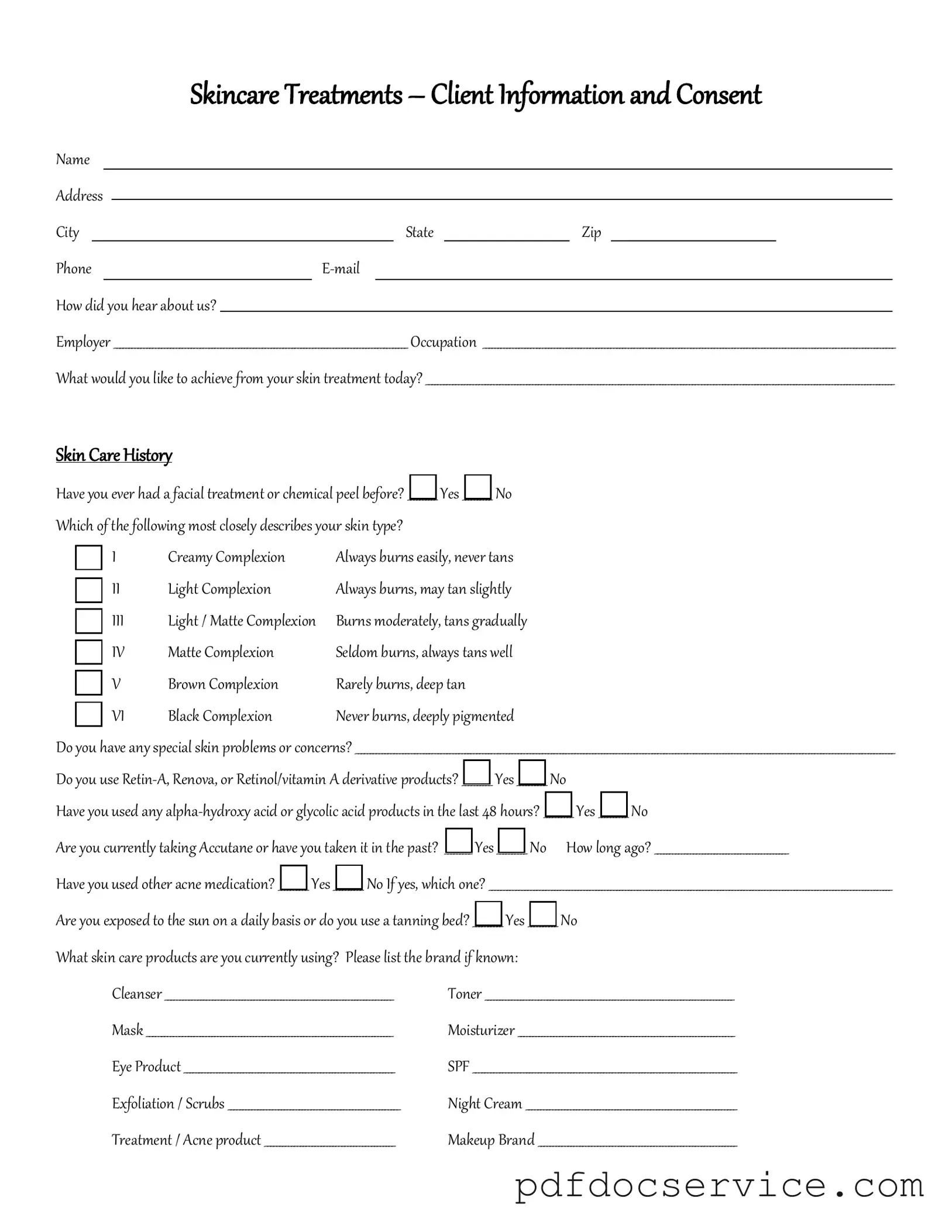A Facial Consent form is a document that clients sign before receiving facial treatments. This form outlines the procedures involved, potential risks, and the client's agreement to proceed with the treatment. It ensures that clients are informed about what to expect and protects both the client and the service provider.
Signing a Facial Consent form is essential for several reasons:
-
It confirms that you understand the treatment and its potential risks.
-
It protects your rights as a client.
-
It helps the service provider maintain a professional standard of care.
The form typically includes:
-
A description of the facial treatment being provided.
-
Possible side effects and risks associated with the treatment.
-
Instructions for aftercare.
-
Contact information for follow-up questions or concerns.
-
Space for your personal medical history and any allergies.
Do I have to disclose my medical history?
Yes, it is important to provide accurate information about your medical history. This helps the service provider assess whether the treatment is suitable for you and ensures your safety during the procedure.
What if I have allergies or skin sensitivities?
If you have allergies or skin sensitivities, you should inform the service provider before signing the form. This information is crucial in determining the best treatment options for you and avoiding any adverse reactions.
Yes, you can refuse to sign the form. However, if you choose not to sign, the service provider may not proceed with the treatment. Signing the form is a standard procedure that ensures both parties are protected.
What happens if I experience side effects after the treatment?
If you experience side effects after your treatment, contact the service provider immediately. They can provide guidance on how to manage the situation and advise you on any necessary follow-up care.
While the Facial Consent form is a legal document, it primarily serves as a record of your informed consent. It helps clarify the risks involved and your agreement to proceed. However, it does not waive your rights to seek medical attention if needed.
You will typically need to sign a new Facial Consent form for each treatment session, especially if the treatment plan changes or if it has been a significant amount of time since your last session. This ensures that you remain informed about any new procedures or products being used.
After signing the Facial Consent form, you should request a copy for your records. The service provider is usually required to keep a copy on file as well. If you need a duplicate, don’t hesitate to ask them for it.
